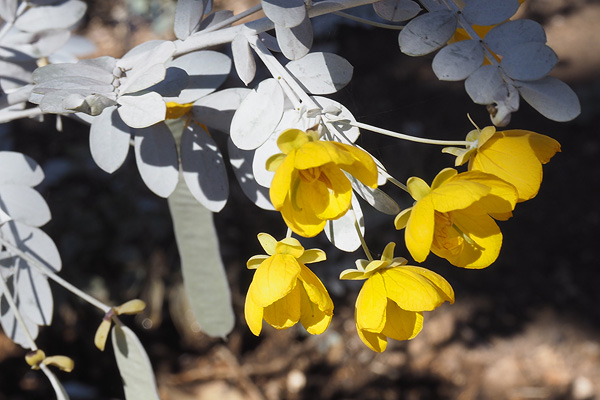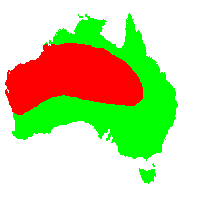General Description:
Senna is a widespread genus of about 350 species. About 46 occur in Australia of which about 33 are endemic. Senna and related genera such as Cassia, Labichea and Petalostylis may still be seen classified within the separate family Caesalpiniaceae but it is now more common for these plants to be classified as a sub-family within the widespread family Fabaceae.
Senna glutinosa is usually a small to large shrub from 0.3 to 2.5 metres high (sometimes a small tree to 4 metres) with sticky stems and leaves. The leaves are pinnate with up to 7 pairs of leaflets. Bright yellow flowers about 1.5 cm diameter are borne in small clusters from the leaf axils and may be observed between late Autumn to early Summer, depending on the subspecies. Flowers are followed by seed pods 5-7 cm x 1-2 cm. Four subspecies are recognised – subsp. glutinosa, subsp. chatelainiana; subsp. pruinosa and subsp. × luerssenii. These differ in the shapes of the leaves and the arrangement of glands between the lowest pairs of leaflets.
This species is not seen in cultivation to a great extent but would be an attractive garden plant for drier climates, especially subsp. pruinosa with its silvery foliage (pruinosa means ‘frosty’ in Latin and refers to the silvery surface of stems and leaves). The plants would benefit from a sunny position with good drainage.
Propagation is usually carried out from seed which germinates readily after treatment with boiling water. Cuttings of hardened, current seasons growth should also be successful.

Senna glutinosa subsp. glutinosa
Photo: Brian Walters

Senna glutinosa subsp. pruinosa
Photo: Brian Walters
 Australian Native Plants Society (Australia)
Australian Native Plants Society (Australia)